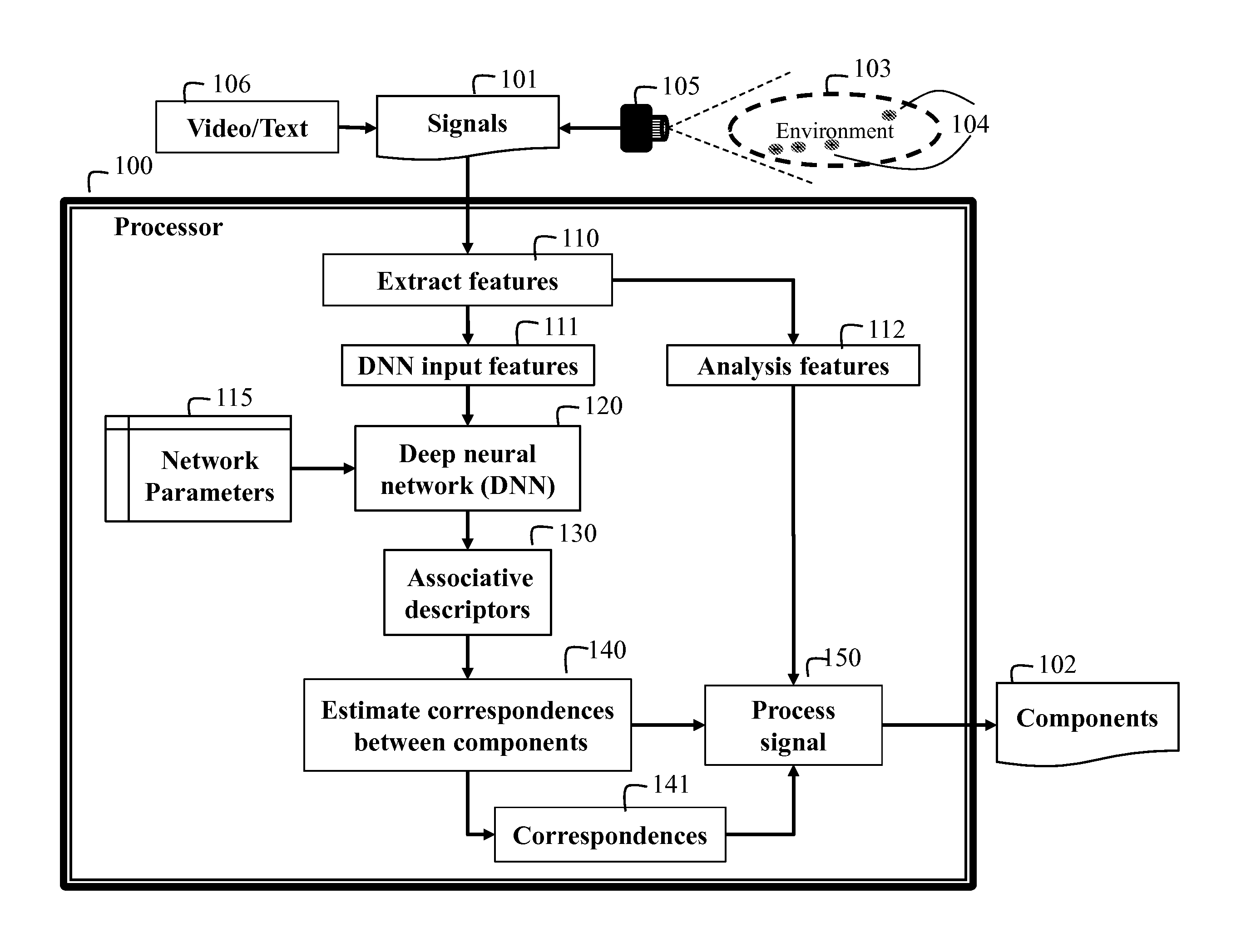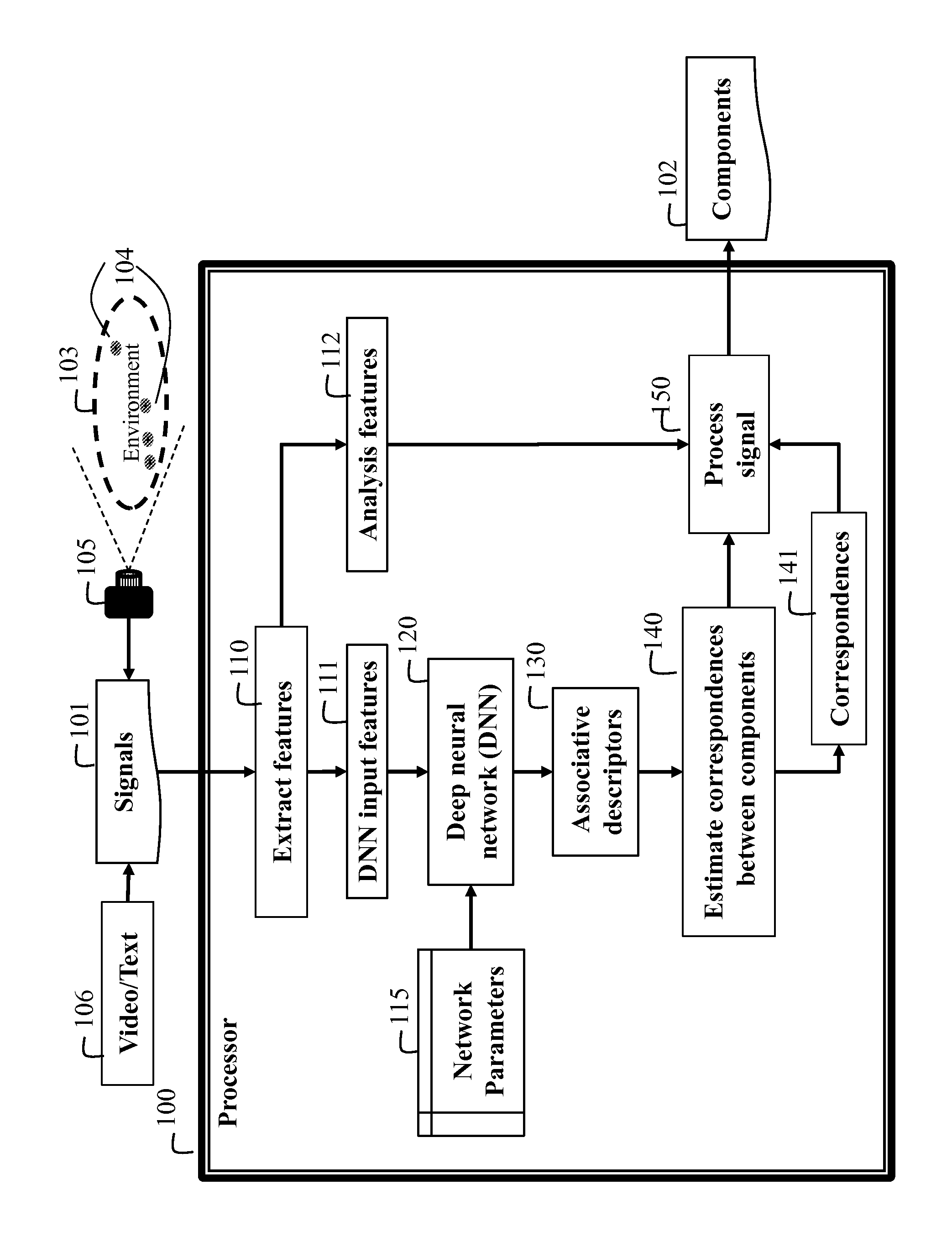Method for distinguishing components of an acoustic signal
a technology of acoustic signals and components, applied in the field of signal processing, can solve the problems of not knowing how to use dnn in a class-dependent way, and achieve the effects of maximizing minimizing the distance between embeddings, and improving signal quality
- Summary
- Abstract
- Description
- Claims
- Application Information
AI Technical Summary
Benefits of technology
Problems solved by technology
Method used
Image
Examples
Embodiment Construction
[0028]The embodiments of our invention provide a method for distinguishing components of a signal using a deep neural network (DNN). The DNN can be a recurrent neural network.
[0029]As shown in FIG. 1, signal 101 is acquired of an environment 103. In one embodiment, the environment includes one or more acoustic sources 104 using an acoustic sensor 105, e.g., a microphone. The signal is processed to extract 110 a set of DNN input features 111, and analysis features 112, wherein each analysis feature, in the form of a feature vector that, defines an element of the signal used for segmentation. In another embodiment, a video signal and / or text 106 are associated with the acoustic signal. In addition or alternatively, the signal contains multi-channel acoustic signals.
[0030]The analysis features can be in a form of short-time Fourier complex spectral coefficients of the input speech signal determined with a 32 ms window length, 8 ms window shift, and a square root of the Hann window. To ...
PUM
 Login to View More
Login to View More Abstract
Description
Claims
Application Information
 Login to View More
Login to View More - R&D
- Intellectual Property
- Life Sciences
- Materials
- Tech Scout
- Unparalleled Data Quality
- Higher Quality Content
- 60% Fewer Hallucinations
Browse by: Latest US Patents, China's latest patents, Technical Efficacy Thesaurus, Application Domain, Technology Topic, Popular Technical Reports.
© 2025 PatSnap. All rights reserved.Legal|Privacy policy|Modern Slavery Act Transparency Statement|Sitemap|About US| Contact US: help@patsnap.com



